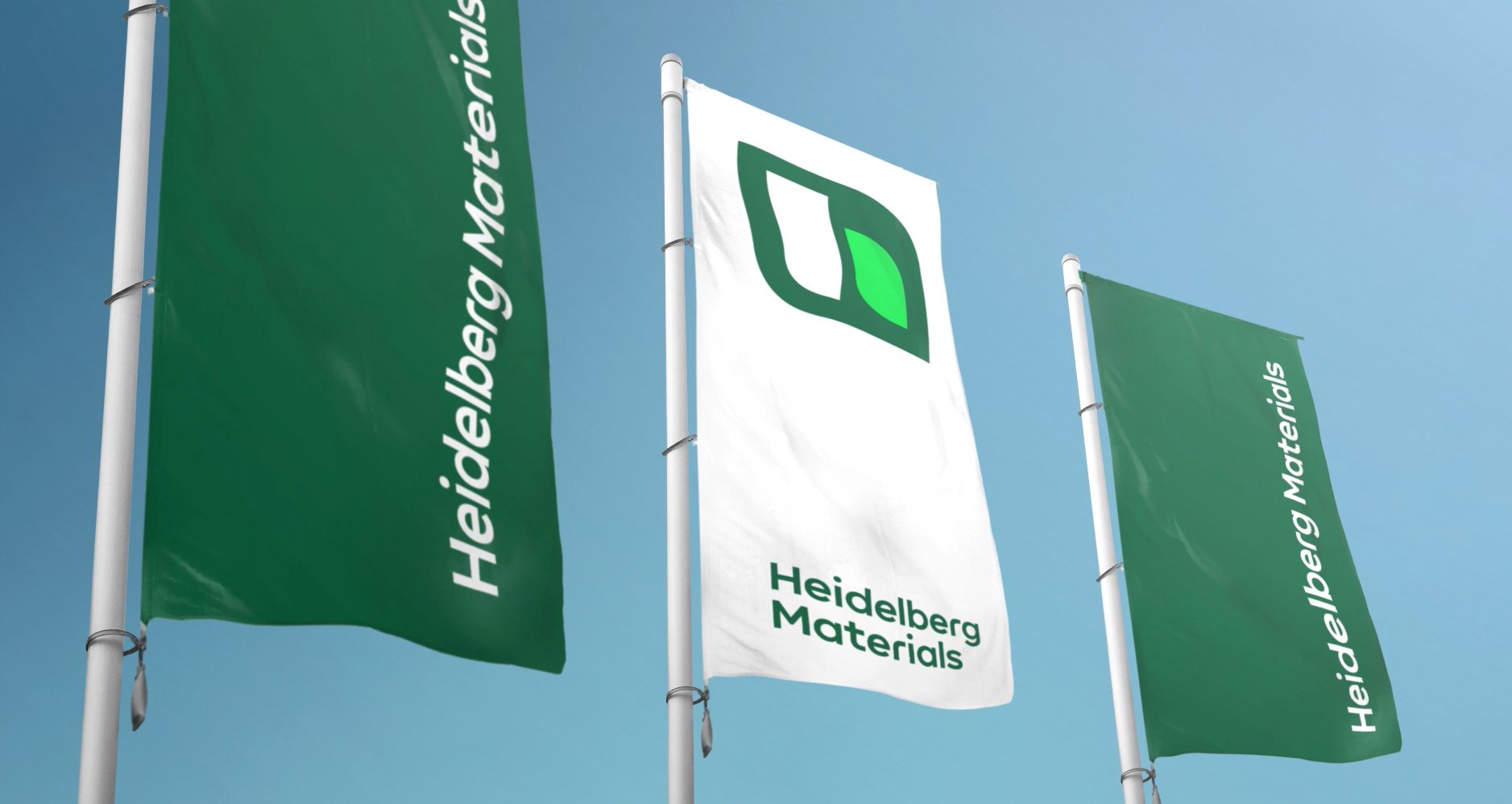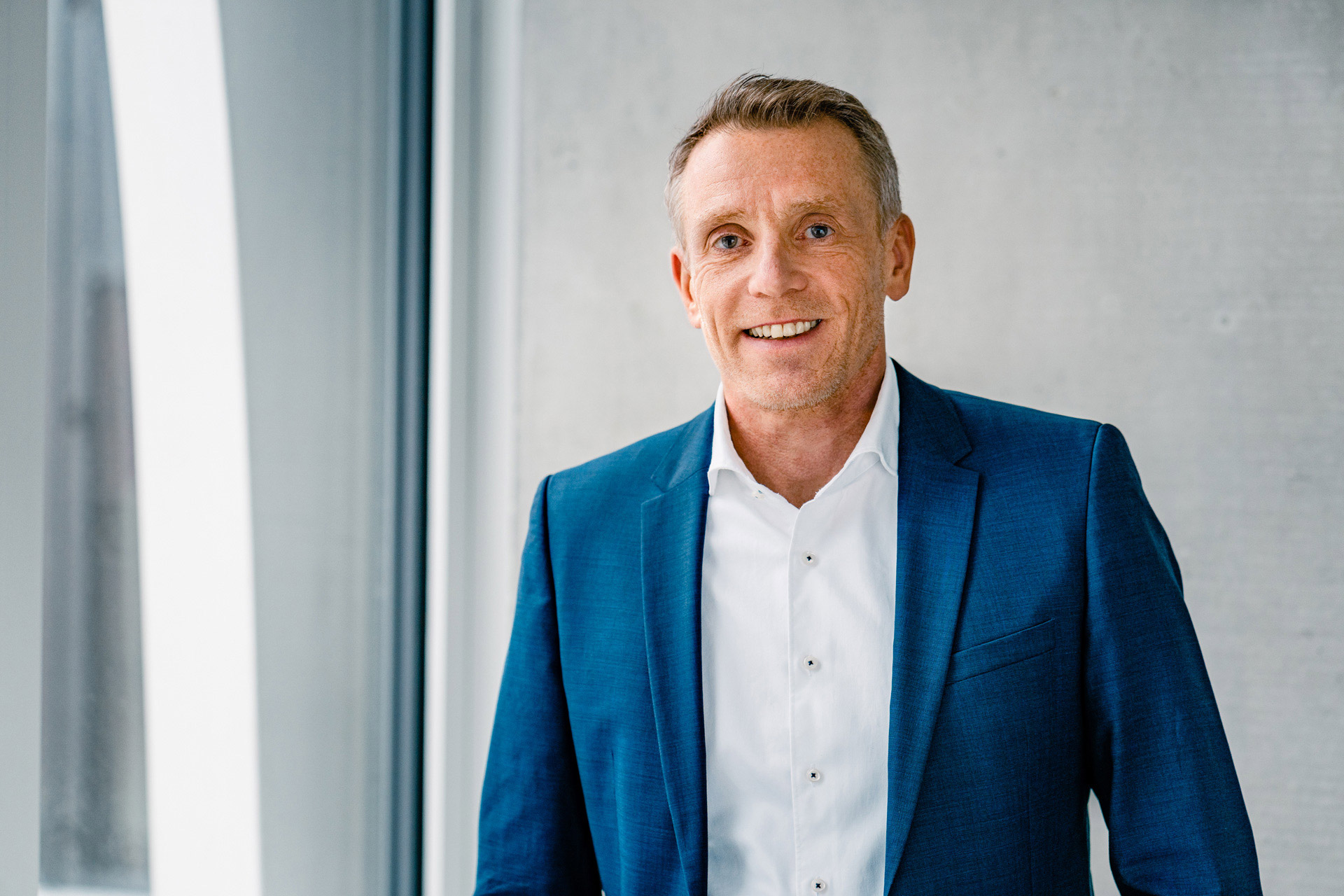HeidelbergCement reports results for the first quarter of 2018
Profit of €6 million achieved for the Q1 2018 period – improvement of €41 million
- Successful portfolio optimisation leads to gain of over €100 million
- Financial result improved by 9% to €-75 million (previous year: -82)
- Result from current operations before depreciation and amortisation decreases by €88 million like-for-like because of bad weather and less working days
- Current order books signal robust growth in mature markets
Outlook for 2018 unchanged:
- Growth in sales volumes of cement, aggregates, and ready-mixed concrete expected
- Moderate increase in revenue and result from current operations before currency and consolidation effects; significant improvement in profit for the financial year
- HeidelbergCement is globally well positioned for sustainable and profitable growth
Positive market dynamics hidden by adverse weather and less working days
In the first quarter, the sales volumes of HeidelbergCement’s building materials developed very differently. While sales volumes in Europe and North America were impaired by a long winter and a reduced number of working days, some emerging countries recorded considerable increases.
During the first quarter, the Group’s cement and clinker sales volumes rose by 2% to 28.2 million tonnes (previous year: 27.5). Declining sales volumes in Europe and North America were more than offset by significant growth in Asia-Pacific and Africa-Eastern Mediterranean Basin. In Asia, particularly Indonesia and India contributed strongly to this growth. In Africa, substantial increases in sales volumes were recorded in Egypt, Ghana, and Tanzania.
Deliveries of aggregates fell by 2% to 59.5 million tonnes (previous year: 60.9). Strong growth in Asia-Pacific did not fully compensate for the weather-related decline in sales volumes in Europe and North America.
Deliveries of ready-mixed concrete also decreased by 2% to 10.2 million cubic metres (previous year: 10.4) because of the adverse weather conditions. In contrast, asphalt sales volumes improved considerably by 11% to 1.6 million tonnes (previous year: 1.5) owing to the positive development of demand in California and consolidation effects in the northwest of the USA. Excluding consolidation effects, the increase amounted to 2%.
Successful portfolio optimisation more than compensates for negative weather and calendar effects
Group revenue fell by 4% in the first quarter to €3.6 billion (previous year: 3.8). Negative currency effects of €-264 million had an adverse impact on revenue. Adjusted for currency and consolidation effects, revenue increased by 2%. The long winter in North America and Europe and the reduced number of working days impaired sales volumes and revenue as well as the result from current operations before and after depreciation and amortisation. In addition, energy costs rose noticeably due to a low starting point in the same quarter of the previous year. The base effect will level off considerably in the coming quarters. In addition, price increases, which have been announced in many markets, will become visible in the second quarter. Result from current operations before depreciation and amortisation decreased by 34% to €252 million (previous year: 383). After depreciation and amortisation, the result from current operations fell to €-16 million (previous year: 108). Adjusted for currency and consolidation effects, the decrease in the result from current operations before depreciation and amortisation amounted to €88 million.
“HeidelbergCement generated a profit in the seasonally weak first quarter and despite difficult weather conditions,” says Dr. Bernd Scheifele, Chairman of the Managing Board. “Our successful management of the portfolio and financial result more than compensated for the weather-related decline in operating result. With the positive underlying market dynamics, we’re confident that we can significantly increase our operational performance in the coming quarters and we remain committed to our goals for the financial year.”
The additional ordinary result rose by €134 million to €118 million (previous year: -16). This was mainly due to gains from the sale of the sand-lime brick operating line in Germany and the white cement business in the USA as part of the ongoing portfolio optimisation. The financial result improved by €7 million to €-75 million (previous year: -82). Net interest expenses were reduced by a further €6 million. Expenses for income taxes decreased to €17 million (previous year: 48).
This results in a profit for the period of €6 million, compared with a loss of €35 million in the previous year’s first quarter, which is typically weak because of seasonal factors. The profit relating to non-controlling interests fell by €6 million to €29 million (previous year: 35). The Group share consequently improved by €47 million to €-23 million (previous year: -70), and the earnings per share improved by €0.24 to €-0.11 (previous year: -0.35).
At the end of the first quarter of 2018, the number of employees at HeidelbergCement stood at 58,751 (previous year: 60,481). The decrease of 1,730 employees essentially results from two opposing developments. On the one hand, more than 3,500 jobs were cut across the Group, firstly through portfolio optimisations, particularly the deconsolidation of our Georgia activities, secondly in connection with the realisation of synergies, especially in Egypt, and lastly as a result of efficiency increases in sales and administration as well as location optimisations, especially in Indonesia. On the other hand, almost 1,800 new employees joined the Group, mainly as a result of the acquisition of companies in Italy and Australia in the first quarter of 2018, and in the USA in the previous year. Furthermore, there was an increase in some countries in the Western and Southern Europe and Northern and Eastern Europe-Central Asia Group areas, and in particular in Australia, owing to the solid market development and the insourcing of truck drivers.
Portfolio optimisation and improvement of free cash flow
In the first quarter, HeidelbergCement concluded a number of important transactions for the purposes of portfolio optimisation. These include the acquisition of Cementir Italia in Italy and the Alex Fraser Group in Australia, as well as the sale of the sand-lime brick operating line in Germany and the white cement business in the USA. As a result, total net investments increased to €448 million (previous year: 139) in the first quarter. Net investments of around €1.1 billion are planned for the full year.
Free cash flow of the last 12 months rose to almost €1.2 billion (12 months until the end of Q1 2017: €1.0 billion). We are expecting a further increase in free cash flow in 2018, driven by lower interest payments, the consistent sale of activities that are not part of our core business, disciplined spending behaviour, and further optimisation of current assets
Outlook for 2018 confirmed
In April 2018, the International Monetary Fund (IMF) confirmed its forecast of a further acceleration of global economic growth to 3.9% in 2018. In many countries, the economy has started to recover, resulting in a synchronous economic upturn on the broadest scale since 2010. The main drivers behind this trend are, on the one hand, the further acceleration of growth in the USA, boosted by the recently adopted tax reform, and the continuing economic recovery in the eurozone. On the other hand, it is also anticipated that the growth rates in the emerging countries will increase again, despite a further economic slowdown in China. Stronger growth is expected in particular for countries in North Africa, the Middle East, and in Africa south of the Sahara, partly because of the considerable increase in the oil price over the past year.
Despite the positive outlook for the global economy, macroeconomic as well as geopolitical risks remain. Regarding macroeconomic risks, special mention must be made of the faster than anticipated rise in inflation and in the interest rate in the USA, possible trade restrictions, and the unpredictable consequences of the downturn in the Chinese economy. The geopolitical risks include, especially, the conflicts in the Middle East, in Ukraine, or with North Korea. Any escalation of these situations could have a negative impact on the business environment.
HeidelbergCement will benefit from the good and stable economic development in the industrial countries, above all in the USA, Canada, Germany, the countries of Northern Europe, and Australia. The continued economic upturn, particularly in the countries of Eastern Europe, as well as in France, Spain – and to a lesser degree – in Italy, will also be to our advantage. These countries generate approximately 75% of our revenue. In the growth countries such as Egypt, Indonesia, Thailand, India, and Morocco, as well as in Western and Eastern Africa, we anticipate an ongoing economic recovery.
In view of the overall positive development of demand, HeidelbergCement projects an increase in the sales volumes of the core products cement, aggregates, and ready-mixed concrete.
In terms of costs, we anticipate a further rise in the prices of energy and raw materials. In contrast, the personnel costs will only increase moderately. Our global programmes to optimise costs and processes as well as to increase margins will be consistently pursued in 2018. These include the Continuous Improvement programmes for the aggregates (“Aggregates CI”), cement (“CIP”), and concrete (“CCR”) business lines, as well as “FOX” for purchasing. As in previous years, we expect these programmes to contribute significantly to further improving our efficiency and result.
On the basis of these assumptions, the Managing Board remains committed to the goal for 2018 of increasing revenue moderately and result from current operations by a mid- to high-single digit percentage before exchange rate and consolidation effects, and of significantly improving the profit for the financial year.
“With the positive underlying market dynamics, we’re confident about 2018,” continues Dr. Bernd Scheifele. “The outlook for the global economy is positive. Nevertheless, major macroeconomic and particularly geopolitical risks still exist. HeidelbergCement is globally well positioned for sustainable and profitable growth. We are on track to meet our strategic goals: to achieve continuous growth, create long-term value for our shareholders, and safeguard high-quality jobs.”
Overview of the HeidelbergCement Group
| January-March | ||||
| €m | 2017 | 2018 | Variance | Like-for- like1) |
| Sales volumes | ||||
| Cement (mt) | 27.5 | 28.2 | 2% | 2% |
| Aggregates (mt) | 60.9 | 59.5 | -2% | -3% |
| Ready-mixed concrete (mm3) | 10.4 | 10.2 | -2% | -1% |
| Asphalt (mt) | 1.5 | 1.6 | 11% | 2% |
| Income statement | ||||
| Revenue | 3,784 | 3,626 | -4% | 2% |
| Result from current operations before depreciation and amortisation (RCOBD) | 383 | 252 | -34% | -26% |
| in % of revenue | 10.1% | 7.0% | ||
| Result from current operations (RCO) | 108 | -16 | n/a | n/a |
| Loss/profit for the period | -35 | 6 | n/a | |
| Group share | -70 | -23 | 68% | |
| Earnings per share in € (IAS 33)2) | -0.35 | -0.11 | 68% | |
| Statement of cash flows and balance sheet | ||||
| Cash flow from operating activities | -485 | -692 | -207 | |
| Investments (cash outflow) | -195 | -716 | -522 | |
| Net debt | 9,601 | 9,879 | 279 | |
| Gearing | 54.1% | 63.9% | ||
1) Adjusted for currency and consolidation effects
2) Attributable to the shareholders of HeidelbergCement AG
9.700 characters

